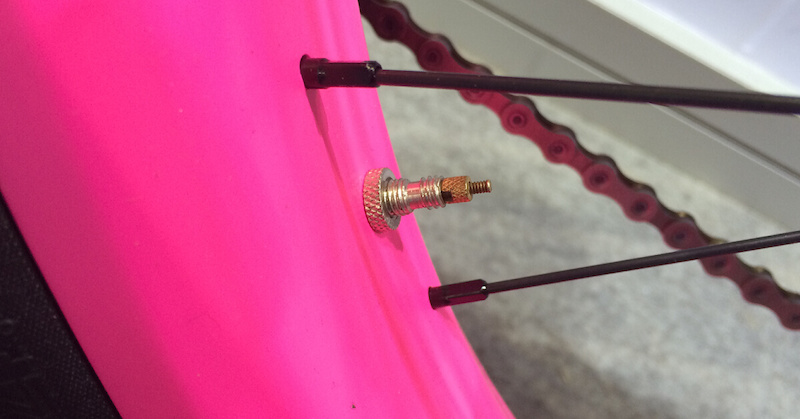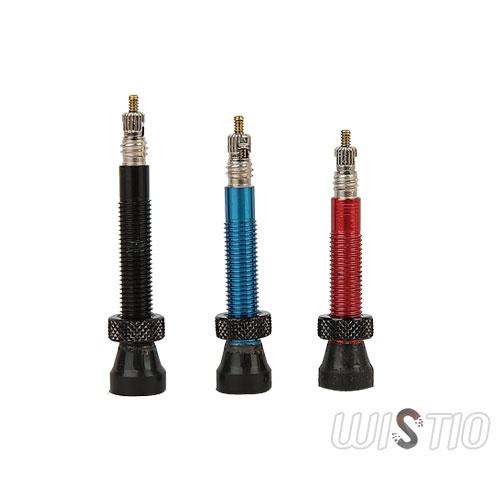Stories posted under Pinkbike Community blogs are not edited, vetted, or approved by the Pinkbike editorial team. These are stories from Pinkbike users.
If a blog post is offensive or violates the Terms of Services, please report the blog to Community moderators.
Presta VS Schrader. Bike Valves Explained
I know that this is one of the things that confuses beginner road riders because it confused me when I started cycling. Presta VS Schrader, what is the difference between the 2 types of valves and which ones have I got? And what are the advantages of Presta valves, or the advantages of Schrader valves? Lets see.
Modern road bike valves can be particularly confusing to older riders who have spent some time cycling in the past, perhaps on a mountain bike, and do not recognise the valves that they find in their modern road bike wheels.
That’s because there are 2 different types of valve found in bicycle tubes, and one of them is much more common in road bike wheels/tubes.
People who have not been road cycling are much more familiar with the “car” valve. These are much more commonly found on cheaper bikes and on mountain bikes or kids bikes, and you can usually blow them up at your regular gas station.
However the valve found much more commonly in road bike tubes is quite different. It is narrower, it is often taller, and can be slightly more difficult to inflate, and you often need to take more care when doing so. And you can’t blow them up at the gas station.
The “car” valve is called a Schrader valve, and it is found on kids bikes, mountain bikes and others, but rarely on higher quality road bikes.
The valve found on road bikes is called a Presta valve (above).
A Schrader valve is easier to use. Simply removed the cap, apply the pump and pump up your tire. This type of valve is bombproof, rarely suffering from any damage, and works beautifully.
To use a Presta valve it is necessary to unscrew the small screw up fitting on the top, and often you need to depress that screw to loosen the valve so you can pump, inflate the tire and then screw up the valve again.
Presta valves are more commonly used because they are narrower, and therefore require a narrower hole in the rim, and the valve hole is the weakest part of the rim. They also come in different lengths, so if you have deep rims you can purchase tubes with valves that are long enough to be accommodated in your rims. However you’ve got to remember this when you buy your tubes, if you get tubes with valves that are too short all you can do is to give them to someone else.
Presta valves also take a higher pressure, which is commonly used in road bike tires.
Since with a removable valve core, so if you have a problem with the valve at any time you can remove the core, (if that is the problem), and replace it, whereas with a Presta valve you can’t remove the core, so must replace the tube.
owever if you have a foot pump that you have used in the past for Schrader valves then it may well have a fitting that accommodates both valve types, and if it doesn’t you can buy a cheap valve adapter that works fine. or you buy a better air pump, which presta and Schrader compatible.
So to sum up, the advantages of Presta valves are that they allow a higher air pressure, require a smaller hole in the rim and can be purchased in various lengths to suit the profile of your rims.
It’s very unusual to see Schrader valves used on road bike tubes and wheels. Almost universally Presta’s are used, and for this reason there is a very good likelihood that Presta’s are what you’ve got. So the argument about Presta vs Schrader is immaterial, you’re unlikely to find a Schrader on a road bike any time soon, though plenty of people want to.
Last, if you would like to know more about tubeless valves or our experience, please contact us(info@wistio.com).
re-edit by www.wistio.com
Author Info:
Must Read This Week
[UPDATED] Final Elite XC Results & Overall Standings from the Mairiporã XC World Cup 2024
42111 views
42111 views
Sign Up for the Pinkbike Newsletter - All the Biggest, Most Interesting Stories in your Inbox
PB Newsletter Signup
0 Comments
Login or Sign Up




 Member since Aug 14, 2014
Member since Aug 14, 2014